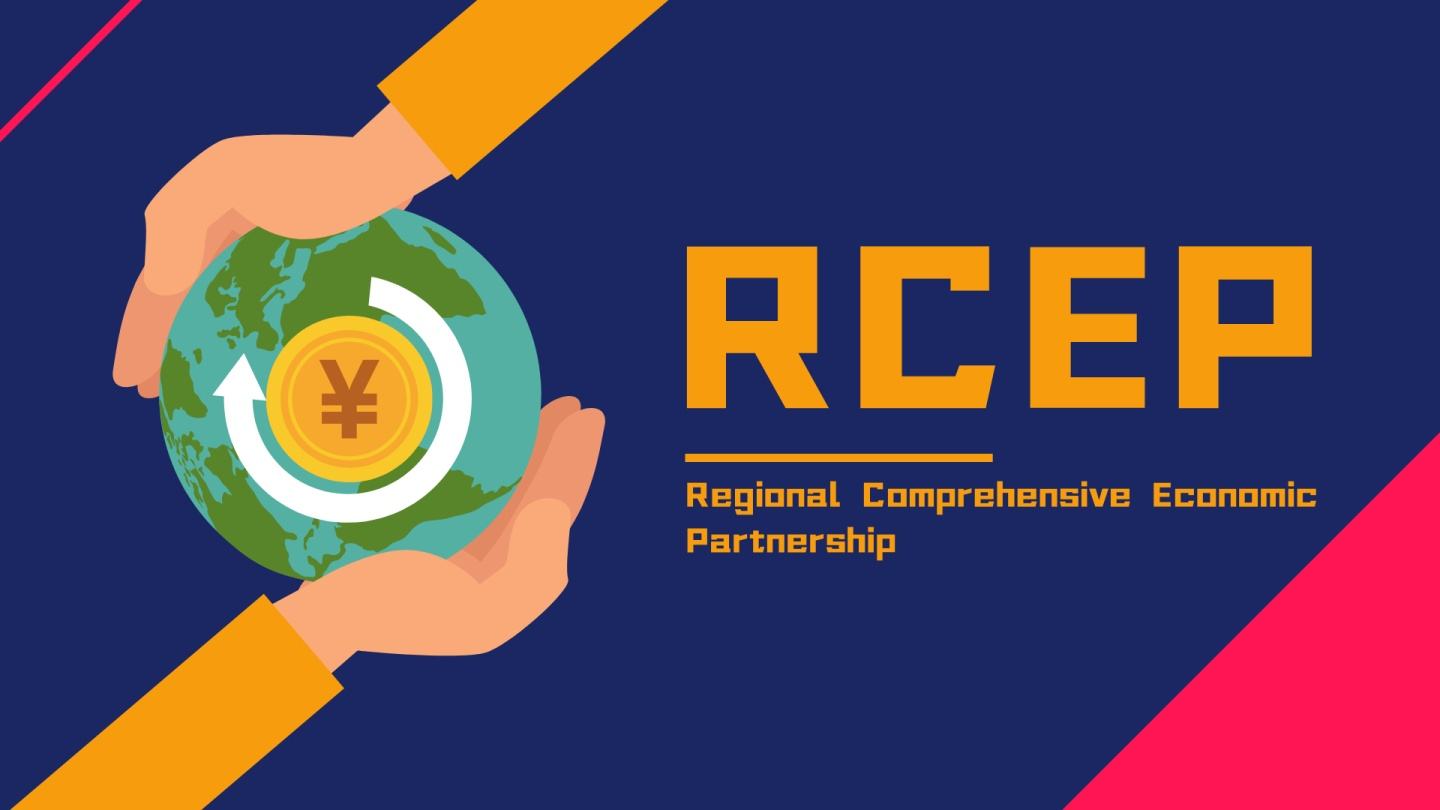RCEP officially takes effect, injecting strong impetus into global economic recovery in the post-epidemic era.
On January 1, 2022, the Regional Comprehensive Economic Partnership (RCEP) came into effect in my country, Japan, Australia and New Zealand, as well as the six ASEAN countries. South Korea will take effect on February 1. Other countries will implement it one after another after completing the domestic approval process. This marks the official landing of the free trade agreement covering the world's largest population, the largest economic and trade scale, and the most development potential. As one of the most active participants and contributors to RCEP, China will firmly support the centrality of ASEAN, and join hands with member states to build a community with a shared future for mankind and create a new chapter of prosperity and beauty.
RCEP - the formation of the global third pole economic circle.
RCEP currently has 15 member countries, including 5 countries of China, Japan, South Korea, Australia, and New Zealand, and 10 members of ASEAN including Brunei, Cambodia, Indonesia, Laos, Malaysia, Myanmar, the Philippines, Singapore, Thailand, and Vietnam. As early as 2001, China took the lead in proposing and launching free trade area negotiations with ten ASEAN countries. Since then, non-ASEAN countries such as Japan, South Korea, Australia and New Zealand have also followed up and launched free trade negotiations with the ten ASEAN countries. After 2008, in order to jointly deal with the global financial crisis, ASEAN countries expressed their hope that on the basis of the bilateral free trade agreements signed between the ten ASEAN countries and relevant non-member countries, they would sign a regional economic partnership agreement to build a super-large East Asian region. The free trade zone further promotes regional economic integration, which has received positive responses from all parties.

On August 16, 2012, countries adopted the "Guiding Principles and Objectives of RCEP Negotiations" and officially launched the negotiations in November of the same year. As of November 2020, relevant countries signed the agreement after 31 rounds of formal negotiations over 8 years. With the signing and implementation of the agreement, it means that the free trade zone with the largest population, the largest trade and investment scale, and the most development potential in the world is officially launched. The RCEP agreement reflects the principle of mutual benefit and win-win in terms of trade in goods, trade in services, investment and rules. With the implementation of the RCEP agreement, it will have the effects of "trade creation" and "investment promotion" for the contracting parties, creating favorable conditions for enhancing the international competitiveness of enterprises of all parties. At the same time, with the substantial reduction of tariff and non-tariff barriers in the contracting states, the level of liberalization and facilitation of intra-regional trade and investment will be greatly improved. High-quality and low-cost commodities, thereby expanding employment for all parties, stimulating economic growth, and increasing economic welfare. RCEP echoes the European Union and the North American Free Trade Area, symbolizing the formation of the global third-pole economic circle.
RCEP comes into effect and implementation promotes regional integration to a higher level.

The effective implementation of RCEP will help to enhance economic connectivity in the Asia-Pacific region and open a new stage of regional integration and development in the Asia-Pacific region. From the perspective of economic and trade cooperation, the implementation of RCEP has improved the liberalization and facilitation of regional trade and investment, and has strengthened economic and trade and investment exchanges between countries in the region. The tariff will eventually become zero, which injects positive energy into the prosperity and development of regional trade in goods; on the other hand, the existing 15 member states of RCEP have all made higher than the original "10+1" self-service trade in services. The commitment to opening up at the level of trade agreements has effectively driven the improvement and upgrading of service trade in the region. In the field of investment, RCEP has made relevant commitments to non-service investment by adopting the negative list model, and strengthened investment protection, which is conducive to promoting the continuous and fruitful results of regional investment.
RCEP is a modern, comprehensive, high-quality and reciprocal new free trade agreement signed by 15 countries in the Asia-Pacific region, covering about one-third of the world's economic volume, and is regarded as leading the integration of the Asia-Pacific region towards a higher level. An important force for quality and deeper direction. The entry into force of RCEP as scheduled will speed up the negotiation process of the China-Japan-Korea Free Trade Area and boost confidence in the final conclusion of the China-Japan-Korea Free Trade Agreement. Through RCEP, China and Japan, and China and South Korea have established free trade partnerships for the first time, which will stimulate the potential of practical cooperation among the three countries, expand the space for mutually beneficial cooperation, and create favorable conditions for the successful conclusion of the China-Japan-South Korea Free Trade Agreement. At the same time, after the implementation of RCEP, it will be beneficial to the implementation of the APEC blueprint for connectivity, the improvement of the level of cooperation in the Asia-Pacific region, and the construction of the Asia-Pacific Free Trade Area, and will provide an open, inclusive, innovative growth, connectivity, and win-win cooperation to build an Asia-Pacific community of shared destiny. Strong support.
RCEP will provide an important boost to lead the global economic recovery.
The World Bank's latest Global Economic Outlook report for January 2022 states that following a strong rebound in 2021, the global economy is likely to continue to disrupt economic activity due to the rapid spread of the Omicron variant, and continued supply chains A combination of factors, including bottlenecks and inflationary pressures, and heightened financial vulnerabilities in much of the world, means that the risk of a "hard landing" for developing economies increases. Combined with rising inflation, debt and income inequality that could jeopardize the recovery of emerging market and developing economies, global growth is entering a period of marked slowdown, which is expected to slow significantly, from 5.5% in 2021. To 4.1% in 2022, it will fall further to 3.2% in 2023.
To help economic recovery in the post-epidemic era, improve the global economic governance system, and embrace multilateralism and free trade, the entry into force of RCEP is of great significance to world development. RCEP covers a population of about 2.27 billion, GDP accounts for about 33% of the world, and exports account for 30% of the world. As a free trade agreement with the largest participating population, the most diverse member structure, the largest economic and trade scale, and the most development potential in the world. Preliminary calculations show that by 2025, exports, foreign investment stock and GDP will increase by 10.4%, 2.6% and 1.8% respectively. According to the estimates of the Peterson Institute for International Economics in the United States, by 2030, RCEP will increase the exports of countries in the region by 519 billion US dollars, and the national income will increase by 186 billion US dollars. By promoting trade liberalization, investment facilitation and optimization of the global supply chain, RCEP will inject strong impetus into the global economic recovery in the post-epidemic era, and also escort the world economy to avoid risks and achieve stable development.




